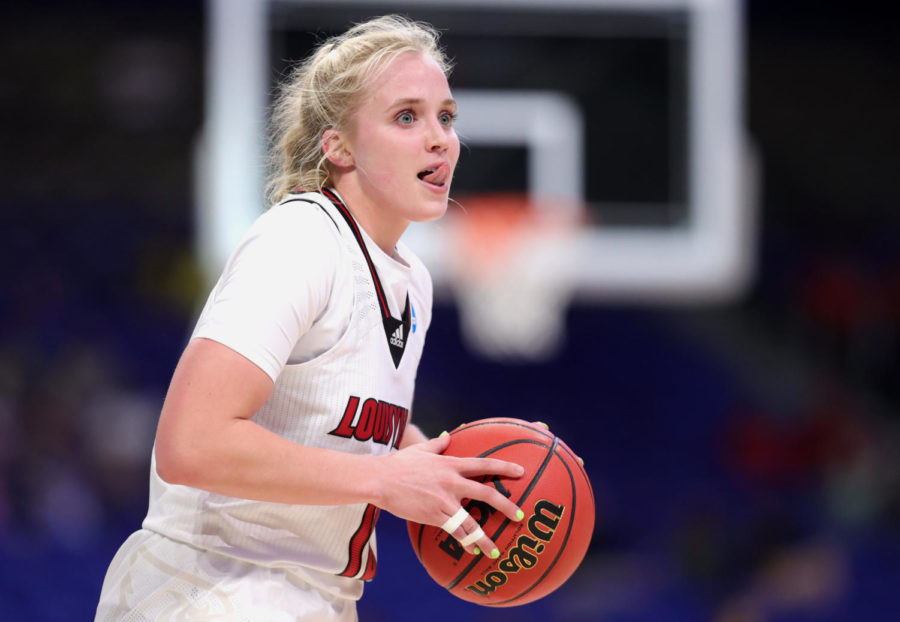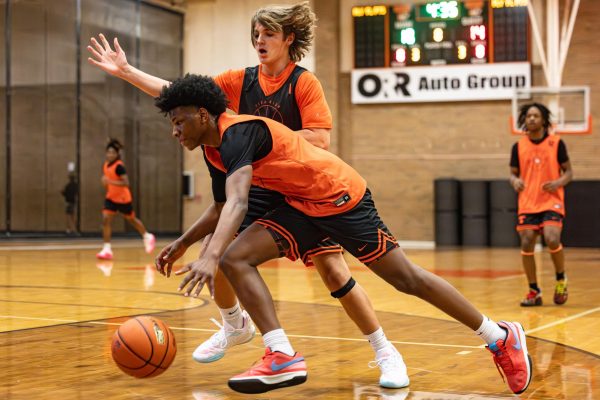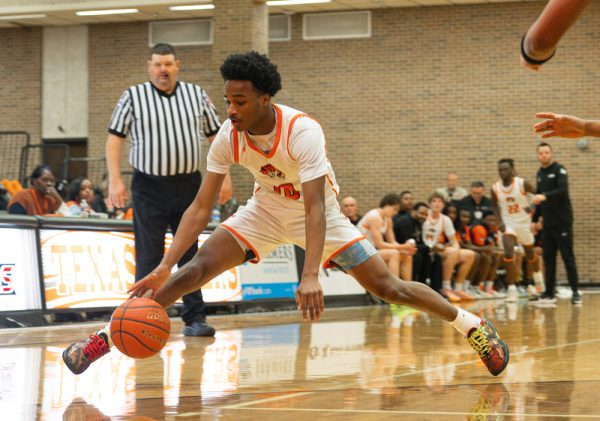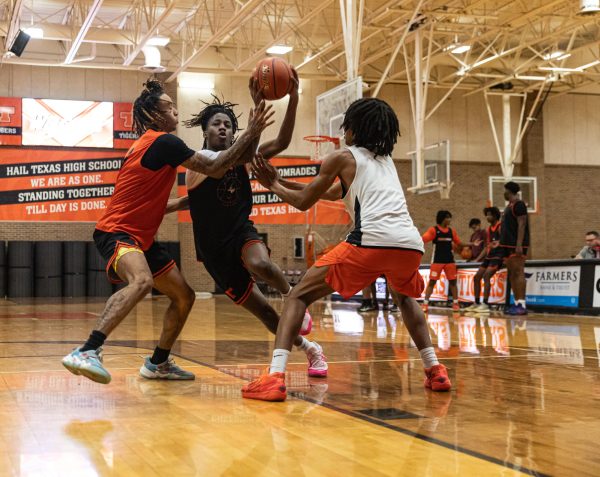Transfer troubles
NCAA transfer portal rates reach high
Hailey Van Lith #10 of the Louisville Cardinals looks to pass during the second half against the Oregon Ducks in the Sweet Sixteen round of the NCAA Women’s Basketball Tournament at the Alamodome on March 28, 2021, in San Antonio, Texas. (Carmen Mandato/Getty Images/TNS)
May 8, 2023
When going through the recruitment process, the thought of making the “wrong decision” sits in the back of the minds of athletes.
What if I don’t like the program?
What if my teammates don’t like me?
So much is going on when choosing where you want to continue your athletic career. It can be a stressful process for anyone.
On Oct. 15, 2018, the NCAA launched the transfer portal as a way to benefit the careers of college athletes by allowing them to take their career into their own hands, all while allowing administrators of the NCAA to track the complete transfer process.
Texas High alumni Treyaunna Rush is among the athletes that made it to Division 1 athletics, committing to Texas A&M University at College Station to play volleyball.
Rush competed under the A&M volleyball team for three years, and in lieu of her senior season, she transferred to the University of North Texas.
If a kid feels they’re being treated poorly, or the coach leaves the school, they can transfer. If the program isn’t giving them what they want to be successful, they can transfer. The portal is letting these athletes dictate their career in ways that weren’t possible just a few years back.
“I was looking for coaches who would set me up for success,” Rush said. “Teammates who were willing to put in the extra effort to win and a safe space to go and talk to someone when needed.”
While in past years the athlete needed permission from a coach , all they have to do now is submit their name. A university compliance official will submit their request to the NCAA, and just like that, they are in the portal.
The initial establishment of the portal required the athlete to red-shirt (not play and retain a year of eligibility) their first year at their new school, much like high school transfers have to forgo a year of varsity competition. However, in April of 2021, the NCAA passed a new legislation allowing one-time transfers to come into their new school with complete eligibility.
Use of the portal across athletics is climbing to new heights. As each athletic season creeps to a close, the portal heats up, and we hear that a new player “has entered the portal”.
One of the Mose recent players who popped up in the portal is Hailey Van Lith, a guard for the women’s basketball team at the University of Louisville. Van Lith entered the portal and went to the 2023 national championship winning team of LSU. Van Lith is just one example of collegiate athletes making a switch.
As of 2022, the transfer portal is reaching a peak in its activity.
The NCAA released the data from transfers upon request for athletes to be able to make “informed decisions” when going about their own transfer journey.
A total of 13% of all student-athletes entered the portal in Division 1 athletics, with 7% making their transfer successfully. The rates of transfer are rising across all collegiate sports.
The release of these numbers by the NCAA sparked the question “what is making these athletes transfer?” The NCAA conducted a survey to figure out the most prominent stressors for collegiate athletes that are leading to the transfers, documented under their most recent Student-Athlete Well Being Study.
Of the athletes surveyed that predicted their transfer within the year, “the top two reasons for women’s sport athletes were mental health (61%) and conflict with coaches or teammates (56%)” and “men’s sport athletes cited mental health (40%) and playing time/participation opportunities (36%) as their primary reasons.”
“A big factor in my transfer was [the desire] to find coaches who 100% believed in my potential,” Rush said. “And who would find what works best to make me as successful as possible.”
Going past just opening up athletes to easier access to transfer, the portal allows kids to essentially customize their transfer experience by being able to control whether or not coaches can contact or who can contact them.
“I was in touch with my club coach before I entered the portal and I discovered that I wanted to attend North Texas,” Rush said. “So when I [entered] my name, I made it to where coaches could not contact me because I already knew where I wanted to go.”
Since 2018, the transfer portal continues to prove itself as an outlet for athletes to control their future, and keep piece of mind while going through the grueling decision process of recruitment.
“I think the portal is good for athletes. The decisions we make at a younf age are going to always continue to be that great decision,” Rush said. “In my case it wasn’t, and I am grateful that I had the opportunity to find a new home.”




















